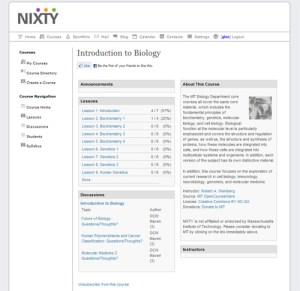 It’s easy to say that online education can never capture the full experience of being in a classroom, the one-on-one chats with the teacher, the face-to-face bonding with classmates, the simplicity of raising your hand when you have a question. Opening a chat window or sending an email just doesn’t compare.
It’s easy to say that online education can never capture the full experience of being in a classroom, the one-on-one chats with the teacher, the face-to-face bonding with classmates, the simplicity of raising your hand when you have a question. Opening a chat window or sending an email just doesn’t compare.
The question is: How much do people care about those differences? Because we heard the same argument with CDs versus MP3s, TV versus online video, reading physical books versus reading over a Kindle or iPad. Evidence has shown that in most categories a meaningful group of people will take convenience over immersive experience.
So far, that hasn’t happened on a large scale in education, and as I wrote before, many Silicon Valley-based entrepreneurs and investors have given up trying. I got a flood of pitches from eLearning companies after that post and one in particular caught my eye because of the desire to build a huge company in this sector, and the realization that it has to be strongly global to win– something you usually hear companies outside of the US say.
It’s called Nixty, and it’s launching today. The team previously ran a learning management software company that won some deals against the market giant Blackboard, mostly on price – but while it was a nice little software business, it wasn’t going to become something huge. And the founders wanted something huge.
Nixty is aiming to be a huge platform for eLearning courses worldwide. Right now, the company has 200 courses from schools like MIT, Harvard, Stanford, Yale, IIT and Berkeley, and offers a variety of teaching tools like automated grade books and easy-to-make-and-print certificates. In addition to aggregating Ivy League courses and putting them in a far easier to navigate, socially-driven user interface, Nixty is hoping teachers and experts will use its easy drag and drop course building software to create new courses, bringing in a wiki angle where people can add certain texts, videos or lectures to a course.
 The cost of entry for teachers is low: public courses (open to all) are free to create, and Nixty is planning to roll out payment functionality for private/continuing education courses soon. For paid courses, Nixty will charge teachers $4.99/month for three courses, or $9.99/month for nine courses plus an additional 20% of whatever the teacher decides to charge students for each course.
The cost of entry for teachers is low: public courses (open to all) are free to create, and Nixty is planning to roll out payment functionality for private/continuing education courses soon. For paid courses, Nixty will charge teachers $4.99/month for three courses, or $9.99/month for nine courses plus an additional 20% of whatever the teacher decides to charge students for each course.
Nixty is hardly the only company trying to be an open, social eLearning tool. This has been a hot market especially in developing countries, and Nixty is wise enough to recognize that’s where a lot of the battle is going to be fought, rather than in the US. Which is not to say there are no niche markets here – for instance, children being homeschooled whose parents would like new-self-driven curricula, or people who can’t easily leave the house, either because of disabilities, childcare issues or even house arrest (speaking of which: continuing education courses for attorneys or lawyers may be another niche.) My parents are retired teachers, who still do interdependent studies and reading groups at their home from time-to-time. I could see them and many more like them who still want the thrill of teaching without the administrative hassle crafting a course on their own using this software, and easily dragging and dropping materials already on their computers into Nixty’s easy course builder interface.
But back to the argument of how much people care about immersive experiences, the fact is that most people who can afford to go to college in the US want the experience of actually going to college. Those of us who would love to go back to college but don’t have the time to take off from careers or raising families, could use Nixty, but the problem is what I call the “Rosetta Stone dilemma.” I love Rosetta Stone’s software, and I think the approach to learning languages works – but the bottom line is there’s no short cut to the hours you need to put in to really learn a language fluently and I just don’t have those hours. It’s the same reason a lot of eHealth ventures have flopped. You have to build companies for how people actually behave, not how you’d like them to.
But if Nixty can use it’s US advantage to aggregate the world’s best educational content and build a user interface optimized for countries like India, Indonesia, Brazil and China, it could have a huge hit on its hands. Say a family wants to send their son or daughter to the US for college but can’t quite afford it. A foreign student can actually take enough courses over Nixty to allow them to transfer in as a sophomore or junior.
Nixty’s timing is good—last week Michigan State University announced it was closing its Dubai campus, the latest in a trend of US schools retrenching from global expansion of the last decade. Would being on campus be a better learning experience than taking their courses online? Of course. But if you’re in Dubai and you don’t have the option, Nixty could be an educational life-line.